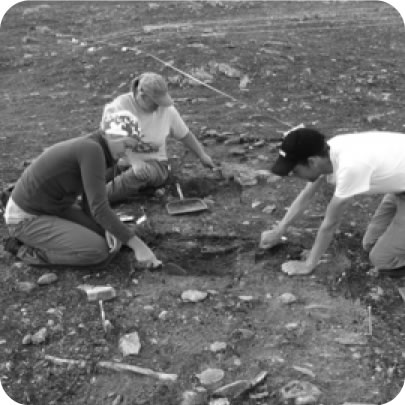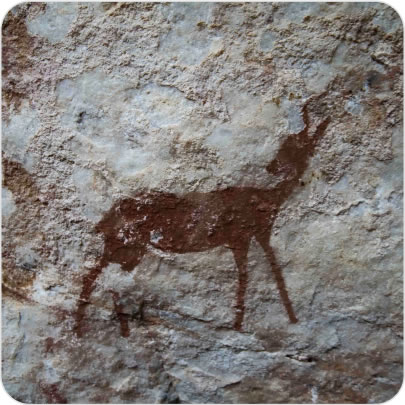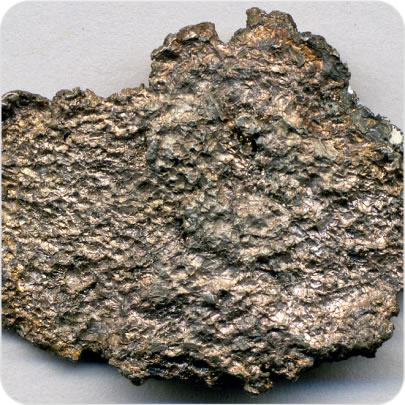Magnetic Susceptibility
Magnetic susceptibility is a fundamental concept in the field of magnetism that describes the magnetization response of a material to an applied magnetic field. It is a measure of the degree to which a material becomes magnetized in response to an external magnetic field. Magnetic susceptibility has many practical applications, including the detection of minerals, environmental studies, and archaeology.
In this article, we will discuss the concept of magnetic susceptibility in detail, exploring its types, properties, and applications. We will also examine the different techniques and instruments used for measuring magnetic susceptibility and their advantages and limitations. Finally, we will explore some of the cutting-edge research in the field of magnetic susceptibility and its potential for future developments.
Table of Contents
- What are magnetic susceptibility and permeability?
- What are the different types of magnetic susceptibility?
- What are the applications of magnetic susceptibility?
- What type of samples can be measured with the MS2 sensors?
- How is magnetic susceptibility used in environmental sciences?
- Is magnetic susceptibility used alone, or are other analysis methods are used?
- What is the link between paleoclimate studies and magnetic susceptibility?
- How can magnetic susceptibility be used in Archaeology?
- What other magnetics method can be used in archaeology?
- Are fluxgates solely used for archaeology?
- Conclusion
What Are Magnetic Susceptibility And Permeability?
Magnetic susceptibility and permeability are two important concepts in magnetism that describe the ability of a material to be magnetized in the presence of an external magnetic field.
Magnetic susceptibility refers to the degree to which a material becomes magnetized in response to an applied magnetic field. It is a dimensionless quantity that measures the ratio of the magnetization of a material to the applied magnetic field. Materials with a positive magnetic susceptibility become magnetized in the same direction as the applied field, while those with a negative susceptibility become magnetized in the opposite direction. To put it simply, M=χvH where M is the Magnetization, H is the magnetic field strength and χv is the volume susceptibility.
Permeability μ links magnetizing field H and magnetic flux density B in a material in the following way B = μH. Relative permeability (μr) can be expressed as the ratio of permeability (μ) and permeability of vacuum (μ0), which is a fundamental constant of nature.
The relative permeability is a dimensionless quantity that is directly linked to magnetic susceptibility where χv = μr-1.
Both magnetic susceptibility and permeability are important parameters for understanding the behavior of magnetic materials, and they are commonly used in the design and analysis of magnetic devices such as transformers, motors, and magnetic storage media.
What Are The Different Types Of Magnetic Susceptibility?
There are five types of magnetic susceptibility: diamagnetic, paramagnetic, ferromagnetic, antiferromagnetism, and ferrimagnetism.
Diamagnetic materials

These materials have a negative magnetic susceptibility, which means their magnetization is in the opposite direction to the magnetizing field… Diamagnetism arises from the way electrons behave in response to an external magnetic field. Examples of diamagnetic materials include copper, silver, gold, and water.
Paramagnetic materials

These materials have a weakly positive magnetic susceptibility, which means their magnetization slightly enhances the magnetic field.. Paramagnetism arises from the presence of unpaired electrons in the material, which can align their spins with an external magnetic field. Examples of paramagnetic materials include aluminum, platinum, and oxygen.
Ferromagnetic materials

These materials have a very high magnetic susceptibility, which means they can become strongly magnetized in the presence of an external magnetic field. Ferromagnetism arises from the interaction between the spins of the electrons in the material, which can spontaneously align to create a net magnetic moment. Examples of ferromagnetic materials include iron, nickel, cobalt, and some rare-earth metals.
Antiferromagnetism

In this type of magnetism, adjacent magnetic moments are aligned in opposite directions, resulting in a net zero magnetic moment for the material. Examples of antiferromagnetic materials include manganese oxide and chromium.
Ferrimagnetism

Ferrimagnetic materials have two types of magnetic moments that are aligned in opposite directions but are not equal in magnitude, resulting in a net magnetic moment. An example of a ferrimagnetic material is magnetite.
What Are The Applications Of Magnetic Susceptibility?
Magnetic susceptibility has various applications in science, engineering, and technology. Here are some examples:
Mineral exploration

Magnetic susceptibility is used to identify mineral deposits that are rich in magnetic minerals, such as iron, nickel, and cobalt. By measuring the magnetic susceptibility of the rocks and soils in an area, geologists can locate areas (or horizons in borehole) that are likely to contain valuable mineral resources.
See document.
Biology/Medical Sciences

In biomedical applications, magnetic susceptibility is used to determine the magnetic properties of superparamagnetic nano-particles used as potential delivery mechanism for targeted drugs or cancer treatment.
See publication.
Materials science

Magnetic susceptibility is used to study the properties of magnetic materials and their behavior in magnetic fields. This information is used to design new materials with specific magnetic properties for applications such as data storage, energy conversion, and sensors.
Environmental monitoring

Magnetic susceptibility can be used to monitor environmental pollution, such as the concentration of heavy metals in water or soil. Magnetic particles in the pollutants can be measured using magnetic susceptibility techniques, providing a quick and non-destructive way to assess the level of contamination. Magnetic susceptibility is also used to better understand past climate and land use. Changes in ground cover or precipitation can trigger changes in sediments influx or alter the magnetic properties of soils which can be studied with appropriate magnetic susceptibility meters.
See article.
Archaeology

Magnetic susceptibility is used in archaeology to detect buried artifacts and structures that contain magnetic materials. By measuring the magnetic susceptibility of the soil or sediment, archaeologists can identify areas where human activity has left a magnetic trace, such as buried walls, hearths, or metal objects.
See article.
Magnetic susceptibility is a valuable tool for understanding the magnetic properties of materials and their behavior in magnetic fields, and it has a wide range of practical applications across many fields of science and engineering.
What Type Of Samples Can Be Measured With The MS2 Sensors?
The Bartington MS3 Magnetic Susceptibility System offers a range of sensors used to measure the magnetic susceptibility of solid and liquid samples. The instrument is capable of measuring a wide range of materials, including:
Rocks and minerals

The MS3 is commonly used in geology to measure the magnetic susceptibility of rocks and minerals directly in the field or in a laboratory. This information can be used to identify different mineral species and to study the geological history of a particular region.
Soils and sediments

The MS3 can also be used to measure the magnetic susceptibility of soils and sediments, including cores and split cores. This information can be used to study soil properties, soil erosion, and to monitor environmental pollution.
Archaeological landscape

The MS2 sensor is used in archaeology to measure the magnetic susceptibility of soils in order to determine the historical use of the site. This information can be used to identify historical use of a site and layout of said site over time. Measurements can be undertaken directly in the field.
Biomedical samples

The MS2 sensor can also be used to measure the magnetic susceptibility of magnetic nanoparticles used in biomedical applications. This information can be used to ensure the particle will be correctly located using magnetometers or correctly respond to magnetic fields used as part of the treatment.
The MS3 system is a versatile instrument that can be used to measure the magnetic susceptibility of a wide range of solid and liquid samples, making them a valuable tool in many fields of science and engineering.
How Is Magnetic Susceptibility Used In Environmental Sciences?
Magnetic susceptibility is used in environmental sciences in a variety of ways, including:
Monitoring pollution

Magnetic susceptibility measurements can be used to detect and monitor pollution in environmental samples such as soil, water, and sediment. Magnetic particles in pollutants can be measured using magnetic susceptibility techniques, providing a quick and non-destructive way to assess the level of contamination.
See article.
Studying sedimentary processes

Sedimentary processes, such as erosion and deposition, can be studied using magnetic susceptibility measurements. Changes in magnetic susceptibility can be used to track the movement of sediment and to reconstruct the history of sedimentary processes in a particular area.
Identifying sediment sources

Magnetic susceptibility measurements can be used to identify the sources of sediment in a particular area. This information can be used to track the movement of sediment and to understand past geological activity on a site.
See article.
Studying paleoclimate

Magnetic susceptibility measurements can be used to study the history of climate change by analyzing sediment cores. Magnetic properties of sediment layers can be used to reconstruct past climate conditions, such as changes in temperature and precipitation.
See article.
Identifying natural resources

Magnetic susceptibility measurements can be used to identify natural resources such as iron, nickel, and cobalt in rocks and soils. By measuring the magnetic susceptibility of the rocks and soils in an area, geologists can identify areas that are likely to contain valuable mineral resources.
Magnetic susceptibility has proven to be a valuable tool in environmental sciences, providing information on pollution, sedimentary processes, paleoclimate, and natural resource identification. It is a non-destructive, non-invasive technique that can provide valuable insights into the properties of environmental samples.
Is Magnetic Susceptibility Used Alone, Or Are Other Analysis Methods Are Used?
Magnetic susceptibility is often used in conjunction with other analysis methods in many applications, as it provides valuable information on the magnetic properties of materials but does not necessarily provide a complete picture of their composition or structure.
For example, in mineral exploration, magnetic susceptibility measurements are often used in combination with geochemical and geological data to identify mineral deposits. Magnetic susceptibility can indicate the presence of magnetic minerals, but geochemical data can provide information on the presence of specific elements or compounds that are associated with certain minerals. Similarly, geological data can provide information on the geological history of a particular area, which can help to identify areas where mineral deposits are more likely to occur.
In environmental science, magnetic susceptibility measurements are often used in combination with other techniques such as granulometry, scanning electron microscopy, and chemical analysis. These techniques can provide additional information on the composition and structure of environmental samples, which can help to identify the sources of pollution, track sedimentary processes, and study the history of climate change.
In materials science, magnetic susceptibility measurements are often used in combination with other techniques such as X-ray diffraction, neutron diffraction, and electron microscopy. These techniques can provide information on the crystal structure, chemical composition, and magnetic properties of materials, which can help to design new materials with specific properties for various applications.
Although magnetic susceptibility is a powerful tool for studying the magnetic properties of materials, it is often used in conjunction with other analysis methods to provide a more complete understanding of the composition, structure, and properties of materials.
What Is The Link Between Paleoclimate Studies And Magnetic Susceptibility?
Magnetic susceptibility is a useful tool in paleoclimate studies because the magnetic properties of sediments can provide information on past climate conditions. Rate of sedimentation, or changes to magnetic properties in Loess deposits can be indicative of changes to the level of precipitation or microbial activity, giving clues as to the climate conditions at the time.
The magnetic properties of sediment depend on the type and concentration of magnetic minerals present in the sediment. minerals, such as iron oxides have different forms with differing susceptibilities. Change in precipitation and or temperature can lead to conversion from one form to another, or the creation of magnetotactic minerals (have their origin from microbial activity). Changes in temperature, rainfall, and other climate variables can affect the amount and distribution of magnetic minerals in sediment, which in turn affects the magnetic susceptibility of the sediment.
By analyzing the magnetic susceptibility of sediment cores, paleoclimatologists can reconstruct past climate conditions, such as changes in temperature and precipitation.
Magnetic susceptibility is a powerful tool for studying paleoclimate because it provides a non-destructive way to measure changes in the magnetic properties of sediment over time, which can be used as a proxy for understanding past climate conditions. The information obtained from magnetic susceptibility measurements can provide valuable insights into past climate conditions, which in turn can help us to better understand and predict future climate change.
Geosciences and
Archaeology
How Can Magnetic Susceptibility Be Used In Archaeology?
Magnetic susceptibility is a useful tool in archaeology because the magnetic properties of soils can provide information about the history and use of archaeological sites.
Archaeological sites are often characterized by layers of sediment that have accumulated over time, and these layers can have different magnetic properties depending on the type and concentration of magnetic minerals present. For example, human activity at an archaeological site, such as the use of fire, can alter the magnetic properties in the soil. The phenomenon known as magnetic enhancement can be linked to human activity (firing, disturbance of the soil, use of iron tools from the iron age onwards can cause iron particles to contaminate certain horizons)
Magnetic susceptibility measurements can be used to detect changes in the magnetic properties of soils at archaeological sites, which can in turn provide information about the history of the site. For example, changes in the magnetic susceptibility of soils can be used to identify areas where fires were lit, or where organic materials such as bones or wood were buried. Magnetic susceptibility can also be used to identify areas where the soil has been disturbed, such as by plowing or excavation.
Magnetic susceptibility is a useful tool in archaeology because it provides a non-destructive way to study the magnetic properties of soils and to identify areas of interest for further study. It can help archaeologists to reconstruct the history of a site and to establish a chronology for the artifacts and other materials found there.

What Other Magnetics Method Can Be Used In Archaeology?
There are several other magnetic methods that can be used in archaeology, in addition to magnetic susceptibility. These include:
Magnetic gradiometry
This technique measures the gradient of the magnetic field, rather than the magnetic susceptibility itself. By measuring the variations in the gradient of the magnetic field across an archaeological site, it is possible to identify areas of interest, such as walls, ditches, or other features that may be hidden below the surface.
Magnetic remanence
This method involves measuring the remanent magnetization of materials, which is the residual magnetic field left in a material after an external magnetic field has been removed. Magnetic remanence can provide information on the past orientation and movement of materials, such as pottery or bricks, which can be used to reconstruct the history of the site.
These techniques are often used in combination with other non-destructive methods, such as ground-penetrating radar, to provide a more complete picture of the archaeological site. By using multiple techniques, archaeologists can gain a better understanding of the location and nature of buried artifacts, structures, and other features, without damaging the site itself.
Bartington Fluxgate
Magnetometer, 3-Axis,
Low Noise
Are Fluxgates Solely Used For Archaeology?
No, fluxgate magnetometers are not solely used for archaeology. They have a wide range of applications in various fields, including geology, geophysics, environmental studies, and space research.
In geology and geophysics, fluxgate magnetometers are used to study the magnetic properties of rocks and minerals, which can provide information about the locations of mineral deposits, or to understand the overall structure of the crust by using electromagnetic sounding methods.
In space research, fluxgate magnetometers are used to both orientate the spacecraft and study the magnetic fields of planets, moons, and other celestial bodies. For example, they have been used to study the magnetic properties of Mars and to map the magnetic field of the sun.
Fluxgate magnetometers are also used in various industrial and engineering applications, such as in the measurement of magnetic fields in motors, generators, and transformers. Fluxgate magnetometers are a versatile and useful tool for measuring magnetic fields and have many applications across a wide range of fields.

Conclusion
To recap, magnetic susceptibility is a measure of the magnetization response of a material to an applied magnetic field. The susceptibility of a material can be classified into diamagnetic susceptibility, paramagnetic susceptibility, ferromagnetic, ferrimagnetic, and antiferromagnetic susceptibility. Magnetic susceptibility and permeability are closely related with a simple subtraction leading from susceptibility to relative permeability.
The magnetic susceptibility of a material relies on temperature dependence and varies with the applied magnetizing field intensity. Magnetic susceptibility meters like the MS3 can be used to quickly measure susceptibility on a range of natural samples.
Magnetic susceptibility has many applications in different fields, including geology, environmental studies, and archaeology. It can provide valuable information about the properties of materials and can be used to identify buried artifacts, structures, and other features.
Overall, magnetic susceptibility is a fundamental concept in magnetism and is essential for understanding the magnetic properties of materials.
Request Help/Info
If you need to contact someone specific, please visit our Contact Info page. Thank you!
Request Form

